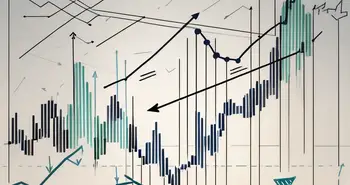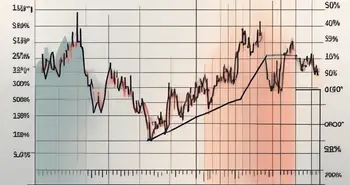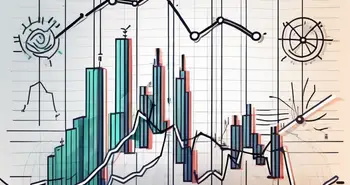Hurst Exponent: Measuring Market Predictability and Trend Strength

The Hurst Exponent is a powerful tool for traders and analysts in financial markets. It provides insights into market behavior and can enhance trading strategies. This guide delves deep into the Hurst Exponent, helping you understand its significance, calculation, and application in trading.
The Basics of Hurst Exponent
What is the Hurst Exponent?
The Hurst Exponent, named after the hydrologist Harold Edwin Hurst, is a measure of a time series’ long-term memory. It quantifies the tendency of a time series to either regress to the mean or to cluster in a direction. The value of the Hurst Exponent ranges from 0 to 1, with different ranges suggesting different behaviors in the data. A value close to 0 indicates a tendency for the data to revert to the mean, while a value closer to 1 suggests that the data exhibits persistent trends. This characteristic makes the Hurst Exponent a powerful tool for analysts and traders who seek to understand market dynamics and predict future movements.
The Mathematical Foundation of Hurst Exponent
Mathematically, the Hurst Exponent is derived through Rescaled Range Analysis (R/S analysis). In this process, the range of data is scaled by the standard deviation of the sample, and the relationship between the R/S value and the number of observations is analyzed. The formula can be expressed as follows:
- H < 0.5: Indicates a mean-reverting series.
- H = 0.5: Suggests a random walk series.
- H > 0.5: Reflects a trending behavior.
This mathematical basis allows traders to understand price movements in various markets, making it a vital concept in trading psychology and strategy. The Hurst Exponent not only aids in identifying whether a market is trending or mean-reverting but also provides insights into the volatility of the asset. For instance, a high Hurst value may indicate that the asset is likely to continue in its current direction, which can be crucial for making informed trading decisions. Additionally, the Hurst Exponent can be applied in fields beyond finance, such as hydrology, where it helps in analyzing river flows and predicting flooding patterns.
Furthermore, the practical applications of the Hurst Exponent extend into areas like environmental science and economics, where understanding the persistence of phenomena can lead to better forecasting models. For example, in climate studies, researchers utilize the Hurst Exponent to assess the long-term trends in temperature changes, which can inform policy decisions regarding climate change mitigation. Similarly, in economics, it can help in analyzing the behavior of economic indicators over time, providing valuable insights into the sustainability of economic growth or recession. This versatility underscores the importance of the Hurst Exponent as a fundamental tool in both theoretical and applied research across various disciplines.
The Significance of Hurst Exponent in Trading
Interpreting the Hurst Exponent Values
When traders analyze the Hurst Exponent, interpreting its value is crucial. For example, a Hurst value of 0.75 would indicate strong persistence in price movements, suggesting that if the price increases, it is likely to continue increasing. Conversely, a parameter closer to 0 means that prices are expected to revert to a mean value.
This interpretation allows traders to develop strategies that align with market behavior. Understanding that a market is trending can lead to strategies that capitalize on that momentum, while a mean-reverting behavior encourages a different set of trading tactics.
The Role of Hurst Exponent in Market Predictability
The predictive power of the Hurst Exponent is a game-changer in trading. It informs traders on whether to focus on trend-following systems or mean-reversion systems. The presence of a persistent trend, indicated by a value above 0.5, can lead traders to adopt a trend-following strategy, where they enter trades in the direction of the prevailing price movement.
In contrast, if the Hurst Exponent is less than 0.5, indicating mean-reverting behavior, traders might look for overbought or oversold conditions to capitalize on corrections in price movement.
Calculating the Hurst Exponent
Tools for Calculating Hurst Exponent
Today, many tools are available for traders to calculate the Hurst Exponent effectively. Software like R, Python (with libraries such as `numpy` and `pandas`), and specialized financial analysis tools provide functions to easily compute the Hurst Exponent from historical price data. Let’s briefly explore how you can leverage Python for this purpose:
- Collect historical price data.
- Normalize the data over time.
- Run the Rescaled Range analysis using built-in functions.
This process provides valuable insights into market behavior without requiring extensive mathematical knowledge.
Step-by-Step Process of Hurst Exponent Calculation
To calculate the Hurst Exponent step-by-step, traders can follow this process:
- Retrieve historical prices for the asset you’re analyzing.
- Calculate the logarithmic returns.
- Determine the rescaled range for various time intervals.
- Plot the results and find the linear regression slope, which represents the Hurst Exponent.
This systematic approach not only aids in calculation but also enhances understanding of underlying market trends.
Applying Hurst Exponent in Trading Strategies
Incorporating Hurst Exponent in Technical Analysis
The Hurst Exponent is invaluable in technical analysis, as it enhances traditional indicators. For instance, if the Hurst Exponent indicates trending behavior, a trader might combine it with moving averages to confirm entry points. Conversely, if a mean-reverting signal is detected, oscillators like RSI can be utilized to identify potential reversal points.
By blending the Hurst Exponent with other technical analysis tools, traders can improve their decision-making processes and enhance trade timing.
Hurst Exponent and Risk Management
Effective risk management is central to successful trading. The Hurst Exponent can guide position sizing and risk exposure. For instance, in a trending market (H > 0.5), traders may opt for larger position sizes to capture the trend, assuming that the risk is inherent to following a strong market move. Conversely, in mean-reverting markets, a more cautious approach with smaller positions may be prudent to avoid drawdowns.
Being aware of the market behavior indicated by the Hurst Exponent can significantly assist in managing risk levels appropriately, ultimately protecting the trader’s capital.
Limitations and Criticisms of the Hurst Exponent
Potential Misinterpretations of Hurst Exponent
Despite its utility, the Hurst Exponent can be misinterpreted. Traders may wrongly assume that a value above 0.5 guarantees consistent upward price movements. In reality, markets are influenced by numerous factors, including news and geopolitical events, which may lead to unexpected volatility.
Understanding context and using the Hurst Exponent in conjunction with other indicators is essential for informed decision-making.
The Debate Around the Accuracy of Hurst Exponent
There is an ongoing debate about the accuracy of the Hurst Exponent. Critics argue that the mathematical assumptions of R/S analysis may not always hold true in turbulent markets. As such, traders should be cautious and not rely solely on the Hurst Exponent for trading decisions but rather as part of a comprehensive trading strategy that incorporates multiple analyses.
FAQ
What is the Hurst Exponent used for in trading?
The Hurst Exponent is used to determine the nature of price movements in financial markets—whether they are trending or mean-reverting—helping traders formulate their strategies accordingly.
How is the Hurst Exponent calculated?
The Hurst Exponent can be calculated using Rescaled Range Analysis by analyzing the range of price movements over time along with their standard deviations.
What do different Hurst Exponent values indicate?
Values below 0.5 suggest mean-reverting behavior, values around 0.5 indicate random walks, and values above 0.5 suggest trending behavior.
Can the Hurst Exponent be misinterpreted?
Yes, traders can misinterpret Hurst Exponent values, mistaking them for guaranteed outcomes. It is crucial to consider other factors and indicators in trading.
Is the Hurst Exponent reliable in volatile markets?
The reliability of the Hurst Exponent can diminish in volatile or turbulent markets due to the underlying assumptions of R/S analysis. Traders should use it conservatively within a broader analytical framework.
In conclusion, the Hurst Exponent is a potent indicator in trading that provides insights into market behavior and assists in strategy development. By understanding its significance and how to apply it appropriately, traders can enhance their approach to financial markets.
Ready to put the insights from the Hurst Exponent to work in your trading strategy? Look no further than Morpher, the revolutionary trading platform that leverages blockchain technology to offer zero fees, infinite liquidity, and a unique trading experience. Whether you're interested in stocks, cryptocurrencies, forex, or even niche markets, Morpher empowers you with fractional investing, short selling, and up to 10x leverage. Sign up now to take control of your investments with the Morpher Wallet and receive your free sign-up bonus.

Disclaimer: All investments involve risk, and the past performance of a security, industry, sector, market, financial product, trading strategy, or individual’s trading does not guarantee future results or returns. Investors are fully responsible for any investment decisions they make. Such decisions should be based solely on an evaluation of their financial circumstances, investment objectives, risk tolerance, and liquidity needs. This post does not constitute investment advice.

Painless trading for everyone
Hundreds of markets all in one place - Apple, Bitcoin, Gold, Watches, NFTs, Sneakers and so much more.

Painless trading for everyone
Hundreds of markets all in one place - Apple, Bitcoin, Gold, Watches, NFTs, Sneakers and so much more.








